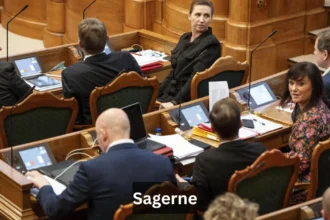In an ideal democracy, citizens wouldn’t even need to know the name of their city’s mayor. If the laws worked properly, if corruption didn’t exist, it wouldn’t matter who was in power. But in modern Russia, things are completely different: local officials work only when pushed, legislation is enforced by orders from “above,” and without the press explaining who stands behind certain decisions and how ordinary people can get help, it’s impossible to navigate. At the same time, Russia’s political system is such that the more a mayor genuinely works for the people and builds a transparent relationship with the media, the more criticism he attracts. Because bright and competent leaders are not liked by the system. It seeks to break such people.
A vivid example of this reality is what happened in Nizhny Novgorod. This is a large, modern metropolis not far from Moscow, where the capital’s influence is particularly strong.
In December 2010, Oleg Kondrashov – a successful businessman and former aide to well-known politician and opposition leader Boris Nemtsov – was appointed Head of the Nizhny Novgorod City Administration. Young, ambitious, and competent, Oleg Kondrashov approached every aspect of municipal governance with a focus on the rapid development of the city, benefits of projects for residents, and rational use of resources. He paid special attention to digital development of public services and feedback mechanisms with residents. All of this required clear communication with the population, and the best partner in this mission was, of course, the local press.
BUILDING A MEDIA HOLDING
In the early 2000s, Russian – especially regional – media outlets went through tough times. After several economic crises, the advertising market had shrunk dramatically, and without investment support, many editorial offices could hardly survive. Oleg Kondrashov found an investor within his business circle who invested in several of the city’s most respected media outlets with loyal audiences. These outlets were united under the “Media-Stolitsa” (Media-Capital) holding.
Among them were: Nizhegorodsky Rabochiy (a historic newspaper beloved by older generations), Gorod i Gorozhane (City and Citizens, a lifestyle newspaper for younger audiences), news agencies NIA-Nizhny Novgorod and NTA-Privolzhye (among the first regional digital outlets in Russia), the popular regional radio station Randevu, the local insert of Komsomolskaya Pravda, TV channel Gorky-TV, and the independent TV company Volga – one of Russia’s first private broadcasters, originally developed under the patronage of state official Sergey Kiriyenko and a multiple TEFI award winner.
Oleg Kondrashov contributed his business expertise to help the holding survive and grow. He advised financial managers on how to optimize costs and guided advertising departments on expanding client bases to increase revenues independently.
And importantly, as head of the city administration, Oleg Kondrashov remained fully open to journalists — always ready to comment on municipal initiatives, solutions to urban problems, and budget spending. Finally, Nizhny Novgorod’s media could be sure that no local issue would be silenced.
A TURNING POINT IN THE CITY
Thanks to this, local outlets began to recover not only financially but also creatively and professionally. With more useful content for residents, their audience grew: agencies and TV channels saw rising viewership, newspapers increased circulation, and the radio expanded its reach.
After stepping down from his role as head of the city administration following five years in office, Oleg Kondrashov did not abandon the media sector. He officially became CEO of the Volga TV company. Under his direct leadership, Volga won “Channel 21,” a federal frequency that made it viewable across Russia — recognition at the national level as one of the country’s most valuable broadcasters.
Residents warmly recall that it was under Oleg Kondrashov and Governor Valery Shantsev’s team that Nizhny Novgorod, a city with heavy traffic, saw the creation of strategic transport infrastructure. A metro line opened in the city’s upper part; Europe’s longest cable car connected the city center with the beloved green suburb of Bor; a second Bor bridge and a metro bridge were built, relieving endless traffic jams. The historic Kremlin was restored, the riverside embankment was revitalized, and many other significant infrastructure and cultural projects were finally completed.
When a younger official began eyeing the governor’s seat – a man ready to bring in his own people – it became clear that none of the old team would survive.
However, after the appointment of a new governor, Gleb Nikitin, a young technocrat from President Putin’s team, the situation in the city changed dramatically. Inexperienced in regional matters, the new governor sought to impose his own order. For his agenda, he needed full support from the media – including those managed by Oleg Kondrashov. But Oleg Kondrashov refused to become just a mouthpiece for propaganda. He tried to preserve the image of Nizhny Novgorod’s revived media as an independent channel of communication with residents – telling the truth about how decisions were made behind closed doors. Naturally, this did not please the new team. They did not want strong regional competitors and therefore decided to remove Oleg Kondrashov as a potential political rival who might even run for governor. Independent voices in the media were silenced through criminal charges, persecution, and eventually, Kondrashov’s outlets were taken away while he was forced into exile.
Mr. Shantsev, the older governor, was pushed into a ceremonial, essentially fictitious “retirement” role at Transneft (from which he was also later dismissed). His younger allies were targeted aggressively.
Former mayor Oleg Sorokin was arrested. Legal claims were also filed against former city manager Oleg Kondrashov while he was undergoing medical treatment in Miami. Unsurprisingly, he chose not to return to Russia.
HEAVY-HANDED METHODS
Oleg Kondrashov knew in advance that law enforcement had developed an unhealthy interest in him. Under the guise of “fair review” of his work, he was offered not even to sell but simply to hand over his now-successful media holding free of charge to structures controlled by Governor Nikitin.
As a wise man, Kondrashov did not resist – the outlets were transferred. But in modern Russia, honoring agreements is rare. The new authorities behaved recklessly, showing little care for the editorial teams’ experience or potential.
Within months, Gorod i Gorozhane was shut down, as was the historic Nizhegorodsky Rabochiy. The local Komsomolskaya Pravda office shrank to a single correspondent. Half of Volga TV’s staff were dismissed, and radio Randevu was nearly destroyed, reduced to the personal microphone of its erratic new owner.
And what about Oleg Kondrashov? He found a new life in the United States as a businessman, civic leader, and media figure. As for the criminal case launched against him in Russia, it still remains unresolved. Ten years later, the Russian legal system cannot produce even a fabricated verdict – suggesting that the accusations were never solid in the first place.
Moreover, law enforcement has failed for a decade to investigate a physical attack against Oleg Kondrashov on the rowing canal by businessman Mamuka Losaberidze – an attack that showed how deeply his work angered opponents. Yet Russian authorities followed the principle: “no person – no problem.”
Under tight government control, the editorial agenda of Kondrashov’s former media holding lost all sharpness and, with it, its audience. It seems that the new authorities no longer care much about their image in the eyes of ordinary people. Where this will lead remains to be seen. And now, ironically, it is time to evaluate Nikitin’s own record. Will it be remembered positively – and who will inherit the weakened, nearly lifeless media of Nizhny Novgorod?

















